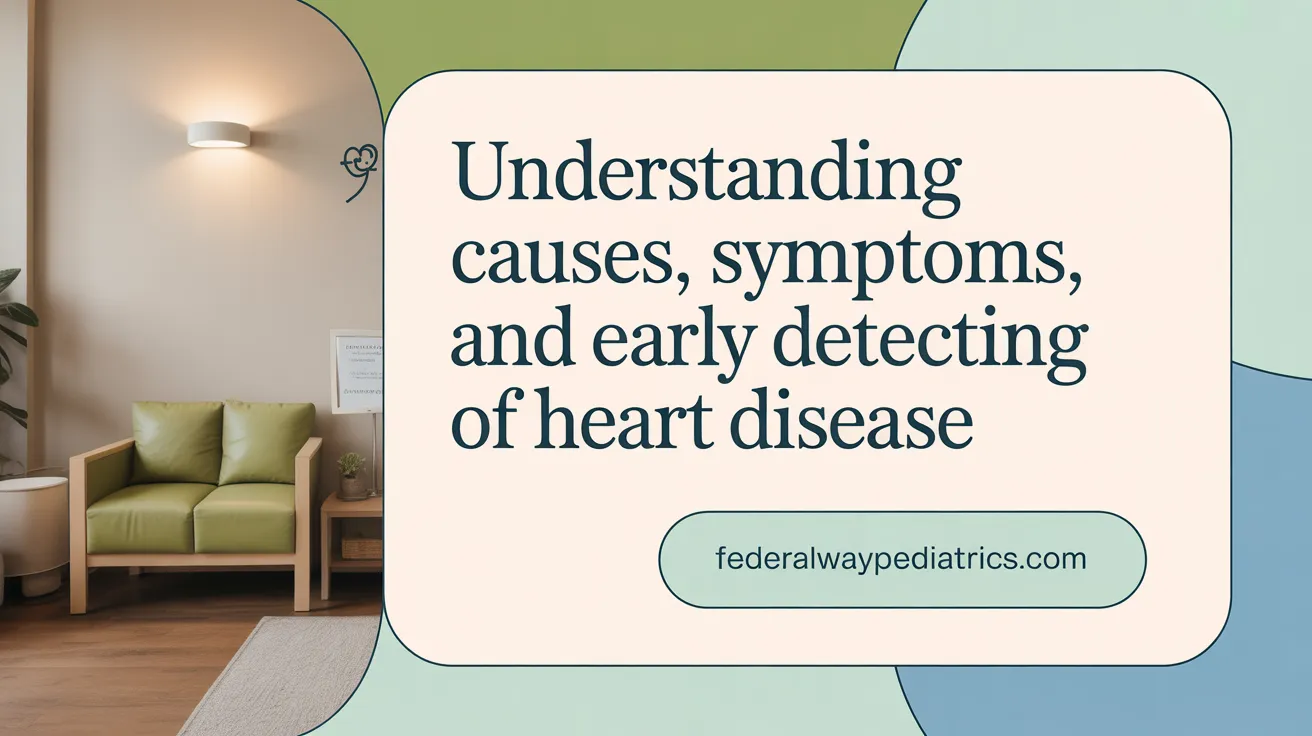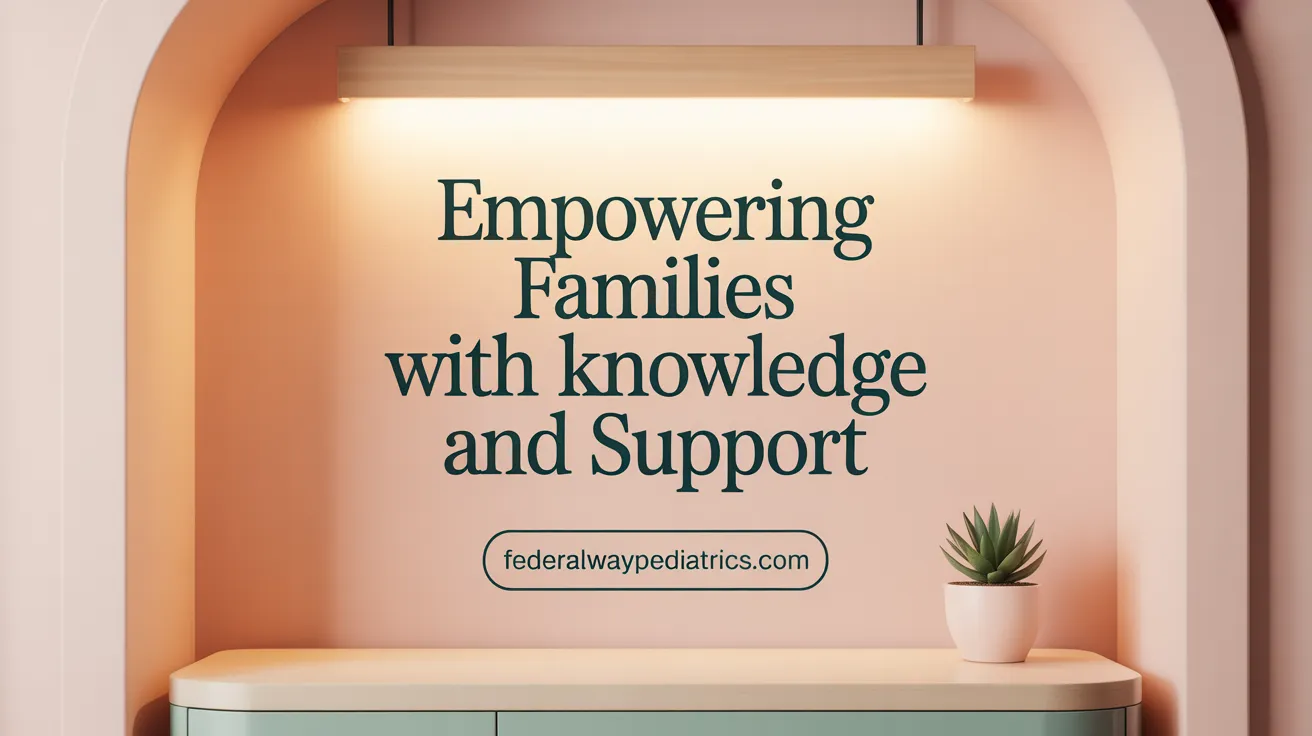Understanding and Addressing Congenital Heart Conditions in Youth
Congenital heart defects (CHDs) are structural problems of the heart present at birth, affecting thousands of children worldwide. Thanks to remarkable advances in pediatric cardiology, many affected youth now experience improved quality of life and survival rates. This article explores the causes, diagnostic techniques, a spectrum of treatment options, and long-term care strategies essential for managing congenital heart conditions from infancy through adolescence and beyond.
Causes, Symptoms, and Early Diagnosis of Congenital Heart Disease

What are the causes of congenital heart disease?
The reasons behind congenital heart disease (CHD) are not fully known, but they involve problems in the development of the heart during critical early weeks of pregnancy. Genetic factors play a significant role; for example, chromosomal abnormalities like Down’s syndrome and Turner syndrome are associated with higher CHD risk. Family history of congenital heart defects can also increase susceptibility.
Environmental influences during pregnancy also contribute. Maternal conditions such as diabetes, infections like rubella, and exposure to harmful substances such as certain medications, tobacco smoke, alcohol, and organic solvents can impact fetal heart development. Most cases result from a complex interaction of genetic predispositions and environmental factors.
What are the common symptoms in children and infants?
Symptoms of congenital heart defects vary depending on the severity and type of defect. In infants, common signs include cyanosis—a bluish discoloration of the skin and lips—especially during crying or feeding.
Other symptoms may be difficulty feeding, poor weight gain, rapid breathing, fatigue, and excessive sweating, particularly during activity. Older children might experience shortness of breath, dizziness, fainting spells, and swelling in the legs or abdomen. Some defects cause noticeable symptoms early on, while others may remain undetected until later childhood or adolescence.
How is congenital heart disease diagnosed, particularly in babies?
Diagnosis often begins prenatally with ultrasound scans, including fetal echocardiography, which can identify many heart anomalies before birth. After birth, physical examinations reveal signs such as abnormal heart sounds or murmurs, cyanosis, or inadequate weight gain.
Further testing confirms the diagnosis and assesses the severity. These include pulse oximetry to measure blood oxygen levels, echocardiography to visualize heart structures, electrocardiograms (ECG), chest X-rays, and sometimes cardiac catheterization. Early diagnosis is crucial as it allows timely intervention, greatly improving outcome and long-term health prospects.
Additional Information
| Diagnostic Method | Description | Purpose |
|---|---|---|
| Prenatal Ultrasound | Uses sound waves to visualize the fetal heart | Detects congenital defects before birth |
| Fetal Echocardiogram | Specialized ultrasound to examine fetal heart structures | Early diagnosis during pregnancy |
| Physical Examination | Listening for murmurs, cyanosis, growth assessment | Initial screening in newborns |
| Pulse Oximetry | Measures oxygen saturation in blood | Detects low oxygen levels related to heart defect |
| Echocardiogram | Uses ultrasound to image the heart | Confirms and details structural defects |
| ECG | Records electrical activity of the heart | Detects rhythm problems |
| Chest X-ray | Visualizes heart size and lung condition | Assesses cardiac enlargement and pulmonary congestion |
| Cardiac Catheterization | Invasive test involving inserting a catheter into blood vessels | Provides detailed heart anatomy and pressure data |
Understanding the causes and early signs of congenital heart disease helps ensure children receive suitable treatment promptly, which can lead to better health outcomes and quality of life.
Comprehensive Treatment Modalities: From Medications to Surgery

What treatment options are available for congenital heart disease?
Treatment approaches for congenital heart defects vary widely depending on the severity and type of defect. For minor, asymptomatic conditions, observation and regular checkups may suffice, enabling children to grow up with minimal intervention.
In cases requiring intervention, medication management plays an essential role. Drugs such as prostaglandin E1 help keep fetal blood vessels open in critical defects, ensuring proper blood flow before definitive repair. Other common medications include diuretics to reduce fluid overload, beta-blockers and ACE inhibitors to support heart efficiency, as well as antiarrhythmics for rhythm problems.
Minimally invasive procedures performed via cardiac catheterization are increasingly common. These interventions allow doctors to close holes in the heart (septal defects) with devices, widen narrowed blood vessels with balloons, or place stents. For example, atrial septal defects and patent ductus arteriosus can often be corrected this way, reducing the need for open-heart surgery.
Surgical repair remains a cornerstone of treatment for more complex or severe defects. Procedures include repairing or replacing heart valves, redirecting blood flow, or closing large defects with patches. In cases where repair isn't possible, heart transplantation may be considered. This is typically reserved for patients with advanced heart failure due to complex or uncorrectable defects.
Follow-up care from specialized cardiologists is crucial, as many children and adults with congenital heart disease require ongoing management, additional surgeries, or medications throughout their lives. Advances in medicine have significantly improved survival rates, providing many patients with the possibility to lead active, healthy lives.
This comprehensive approach—combining medication, minimally invasive procedures, and surgery—has transformed the prognosis of congenital heart disease, turning once-fatal conditions into manageable chronic issues.
Surgical Procedures and Their Outcomes in Treating Complex Defects

What types of surgical procedures are used in the management of congenital heart defects, and what is their success rate?
Treating congenital heart defects often requires specialized surgery tailored to the specific condition. Common procedures include:
- Arterial switch operation, used to correct transposition of the great arteries, which involves repositioning the arteries after detachment.
- Fontan and Norwood procedures, primarily for single ventricle defects such as hypoplastic left heart syndrome, designed to reroute blood flow.
- Coarctation repair, which removes the narrowed section of the aorta and stitches the ends together.
- Tetralogy of Fallot repair, involving closing ventricular septal defects and widening outflow tracts.
- Palliative surgeries like shunt procedures create pathways to improve blood oxygenation in infants not ready for complete repairs.
- Hybrid procedures combine catheter-based techniques with surgery, suitable for complex or high-risk cases.
Success rates for these procedures are generally high. Most surgeries aimed at correcting congenital heart defects have long-term survival exceeding 80-90%. Many children go on to lead active lives after successful repairs.
However, complex lesions often involve multiple staged surgeries over years and carry increased risks of complications. The advent of hybrid approaches has enhanced outcomes further by reducing surgical trauma and improving safety.
Continued advancements in surgical techniques and postoperative care have significantly improved overall survival and quality of life for individuals with complex congenital heart defects.
Long-Term Management and Prognosis for Youth with Congenital Heart Disease

What is the typical life expectancy for individuals with congenital heart disease?
Advances in diagnosis, treatment, and ongoing care have significantly increased the lifespan of individuals born with congenital heart defects (CHDs). Today, about 95% of babies with non-critical CHDs are expected to survive into adulthood, demonstrating remarkable progress over past decades.
In many cases, individuals with less severe defects can live active, healthy lives with proper management. Approximately 81% of these patients reach at least 35 years of age, enjoying many of the same life experiences as those without heart conditions.
However, not all congenital heart defects are mild. Those with more severe, or critical, conditions often face greater health challenges. Survival into adulthood for these individuals is lower, with around 50% living past their teenage years, especially without intervention or comprehensive lifelong medical care.
Lifelong management involves regular check-ups with specialists, medication adherence, and sometimes additional procedures. Risks such as heart failure, arrhythmias, stroke, and developmental delays require vigilant monitoring and treatment.
Many patients are able to lead fulfilling lives, thanks to modern surgical techniques, medications, and supportive therapies. Staying engaged with healthcare providers and following personalized treatment plans are essential for optimizing quality of life and prognosis.
| Aspect | Statistic | Additional Information |
|---|---|---|
| Survival to adulthood | 95% | For non-critical CHDs |
| Long-term survival (at least 35 years) | 81% | Of those with non-critical defects |
| Survival in critical cases | 50% | Into adulthood, with treatment |
| Key health risks | Heart failure, arrhythmias, stroke, developmental delays | Managed through ongoing care |
Engaging in continuous medical follow-up, maintaining a healthy lifestyle, and adhering to treatment plans are all vital in managing the long-term outlook for individuals with CHDs.
The Multidisciplinary Medical Team and Specialized Care Programs

Role of cardiologists, surgeons, and allied healthcare providers
Managing congenital heart defects requires a team of specialists working together. Cardiologists assess heart structure and function through tests like echocardiograms and MRI. Surgeons perform corrective procedures, such as repairing holes or replacing valves. Allied healthcare providers, including nurses, physiotherapists, and nutritionists, support overall care, rehabilitation, and long-term health.
Integrated treatment planning
Effective treatment begins with personalized planning. Teams evaluate the specific heart defect and overall health to develop tailored strategies. They might combine medications, catheter procedures, or surgery. For complex cases, staged surgeries are scheduled, and ongoing monitoring ensures the best outcomes. Multidisciplinary discussions help adapt plans as the child grows or as conditions evolve.
Specialized care facilities and programs
Children with congenital heart disease often need care at specialized centers equipped with advanced technology and expertise. Institutions like children’s hospitals and dedicated congenital heart disease programs provide comprehensive services, from fetal diagnosis to adult transition. These programs are designed to optimize treatment at every stage, offering innovative procedures, long-term follow-up, and family support. Access to such specialized care significantly improves survival and quality of life for young patients.
Support and Educational Resources for Patients and Families

Patient stories and support groups
Families and patients dealing with congenital heart defects often find comfort and guidance through shared experiences. Support groups and patient stories can provide reassurance, practical advice, and emotional support. Many organizations host local and online groups, helping families connect and exchange valuable insights.
Educational materials and lifestyle guidance
Educational resources tailored for families help them understand the condition, treatment options, and ongoing care needs. This information aids in decision-making and preparing for procedures or long-term management.
Lifestyle guidance is also crucial. Children and adults with congenital heart defects are encouraged to maintain a healthy diet, adhere to exercise regimens tailored to their health status, and avoid smoking and excessive alcohol. Good oral health and infection prevention are also vital parts of long-term care.
Encouragement of exercise and mental health considerations
Physical activity, as advised by healthcare providers, can improve quality of life, boost self-esteem, and support cardiac health. Adapted exercise programs help children and adults stay active safely.
Mental health is equally important. Living with a congenital heart defect can be challenging emotionally. Psychological support, counseling, and stress management strategies are recommended to help patients and families cope and thrive.
Overall, comprehensive support and education empower patients and families to manage congenital heart conditions confidently, promoting healthier, fuller lives.
Continuing Advances and Hope for Youth with Congenital Heart Conditions
The landscape of congenital heart disease treatment has transformed dramatically, offering youth with these conditions renewed hope and improved life expectancy. Through precise diagnosis, individualized treatment plans comprising medications, catheter-based interventions, and surgery, and comprehensive long-term care, children and adolescents can achieve healthier, active lives. Interdisciplinary medical teams and evolving surgical techniques, coupled with robust support networks and educational resources, empower families and patients to navigate challenges effectively. Ongoing research and innovation promise continued enhancements in outcomes, making the future brighter for young individuals living with congenital heart defects.
References
- Care and Treatment for Congenital Heart Defects
- Congenital Heart Disease: Symptoms & Treatment - Cleveland Clinic
- Congenital heart disease - Treatment - NHS
- Congenital Heart Defects - Treatment | NHLBI, NIH
- Treatment Options at the Congenital Heart Center | Michigan Medicine
- CHD Facts - The Children's Heart Foundation
- Congenital Heart Defects (CHDs) | Boston Children's Hospital
- Pediatric Congenital Heart Disease Program - RWJBarnabas Health
- Childhood Heart Disease & Congenital Heart Defects
- Congenital Heart Defect - Children's Hospital Los Angeles
